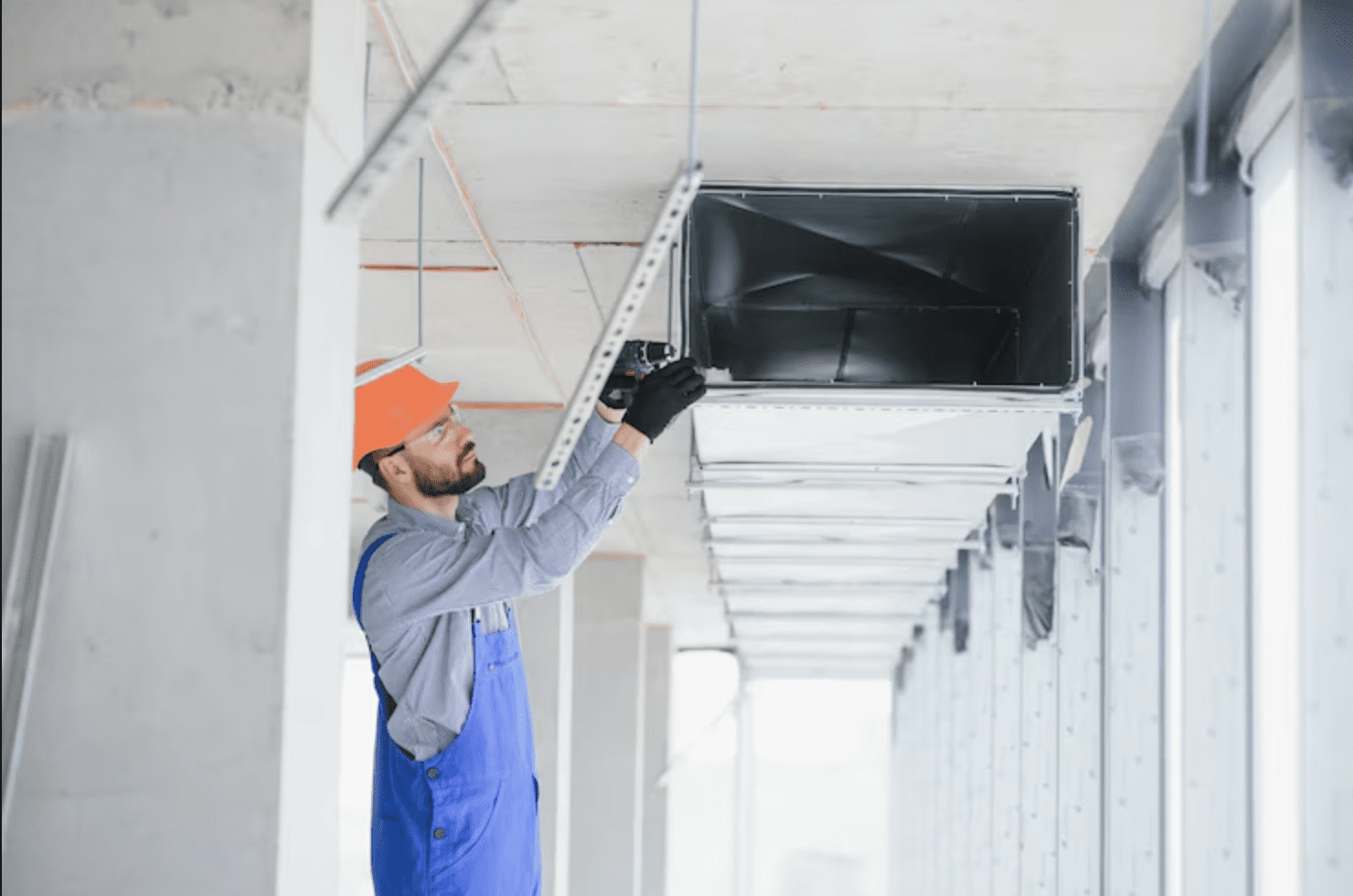
Your rooftop HVAC system plays a major role in your building’s comfort, energy efficiency, and overall functionality. For many commercial properties, it’s the go-to solution: it frees up valuable indoor space, streamlines maintenance, and provides year-round climate control. But with so many systems available, how do you know which one is right for your needs?
Let’s break down the key factors to consider—plus a few smart sustainability touches along the way.

What Is a Rooftop HVAC System?
A rooftop HVAC system is a self-contained unit that combines heating, ventilation, and air conditioning in a compact package mounted on your roof. It’s especially common in commercial buildings where saving indoor square footage is a priority.
Because these systems are installed overhead, they’re less likely to be obstructed or tampered with—making them a secure and space-savvy choice. Many models also offer impressive energy efficiency, helping to reduce monthly utility bills.
What to Consider When Choosing a Rooftop HVAC System
1. Building Size and Load Requirements
First, you’ll need to match the system’s capacity to your building’s size and usage. Too small, and it won’t keep up. Too large, and it will cycle on and off too frequently—driving up energy bills and wearing out components faster.
Load calculations consider square footage, occupancy, insulation, lighting, and equipment. Most businesses work with HVAC professionals who use load calculation software to size the system correctly from the start.
2. Energy Efficiency Ratings
Choosing a high-efficiency rooftop HVAC system pays off in the long run. Look for ratings like:
- SEER (Seasonal Energy Efficiency Ratio) for cooling – aim for 14 or higher.
- HSPF (Heating Seasonal Performance Factor) for heating.
Efficient units don’t just save you money—they also reduce your environmental footprint. Bonus: Many models qualify for ENERGY STAR® certification or local rebates that help offset installation costs.
3. Climate and Environmental Conditions
Your local climate plays a big role in your system choice. In hot, humid areas, you’ll need strong cooling and dehumidification. In colder climates, heating power and freeze-resistance matter more.
And don’t overlook air quality—some units feature advanced filtration systems that can remove dust, pollen, and even allergens from circulating air, improving indoor comfort and health.
4. System Type and Smart Features
There are two main types of rooftop HVAC systems:
- Packaged units, which combine all components into one outdoor box.
- Split systems, where components are divided between indoor and outdoor units.
From there, explore optional features like:
- Smart thermostats with mobile control
- Variable-speed fans that adjust to weather conditions
- Economizers that use cool outdoor air to reduce energy use
These modern upgrades not only increase comfort—they also extend your system’s lifespan.
5. Installation and Roof Capacity
Rooftop AC unit installation isn’t a walk in the park. Installing a rooftop HVAC system requires careful planning. Your roof must support the unit’s weight and allow space for technicians to perform routine servicing.
Sometimes, a crane is needed for the lift, which can add cost. It’s wise to have a structural engineer assess your roof before installation. Planning ahead prevents surprise delays and unexpected bills.

6. Maintenance and Longevity
Rooftop systems typically last 15–20 years with proper care. Choose models with easy-access panels for routine maintenance like coil cleaning or filter changes.
Here’s where smart design shines. Opt for systems with modular, replaceable parts—this allows technicians to swap components instead of replacing the whole unit, reducing waste and long-term costs.
7. Budget and Total Cost of Ownership
The sticker price is just the beginning. Make sure to factor in:
- Installation and equipment costs
- Energy usage
- Ongoing maintenance
- Potential repairs
- Available rebates or tax credits
In many cases, investing in a slightly more expensive, high-efficiency system with long-term durability can save you far more over time.
8. Plan for Responsible Disposal
When upgrading, don’t forget the old system. Ask your installer if they offer eco-friendly disposal services. Many reputable companies safely remove and recycle components like metal casing, motors, and wiring—diverting valuable materials from landfills and reducing your project’s environmental impact.
Why Work with a Pro for Rooftop HVAC?
With so many moving parts—sizing, efficiency, roof load, filtration, climate—it’s worth consulting HVAC experts. A professional team can evaluate your building, recommend the ideal rooftop HVAC system, and ensure a smooth installation.
They can also set you up with a maintenance plan to extend your unit’s lifespan and prevent breakdowns.
Final Thoughts of Rooftop HVAC
Choosing the right rooftop HVAC system is a major decision, but it doesn’t have to be overwhelming. When you take into account your building size, local climate, energy goals, and long-term budget, you’ll be well on your way to finding the perfect fit.
And with smart design choices—like modular systems and responsible disposal—you can future-proof your investment and reduce waste in the process.
Ready to explore your options? Reach out to a trusted HVAC installer and take the first step toward better comfort, efficiency, and peace of mind.
